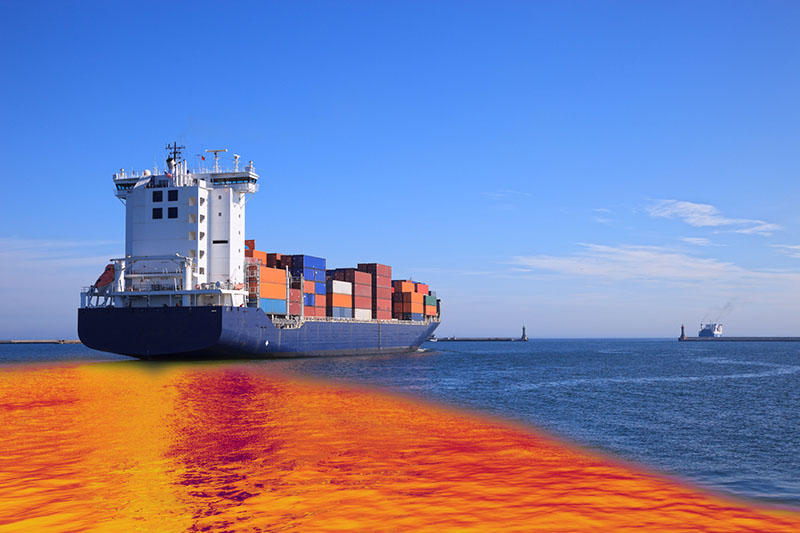Sorry, but your login has failed. Please recheck your login information and resubmit. If your subscription has expired, renew here.
December 2019
If it’s December, it must be time for our annual Executive Guide to Supply Chain Resources. This is a comprehensive guide to services, products and educational opportunities targeted specifically to supply chain professionals. As with years past, we’re also featuring several articles we trust will offer food for thought in your supply chain in the coming year. Browse this issue archive.Need Help? Contact customer service 847-559-7581 More options
Editors Note: This is Part 2 of a two-part series by Brooks Bentz on the impact of new fuel regulations that take effect on January 2020. Part I ran in the November 2019 issue of Supply Chain Management Review.
When the new IMO fuel regulations take effect on January 1, 2020, one of the challenges will be producing compliant blends in sufficient quantities that are consistent enough to function in an vessel seeking to refuel.
As we noted last month in Part 1, there are key indicators that a shift is already underway, and that there is at least some recognition fuel availability may be problematic as the deadline approaches and implementation commences.
A reasonable hypothesis is this: All responsible marine vessel operators will be compliant with the IMO-2020 regulations. Some will convert (as some already have) to distillate fuels. Some (estimates say less than 5%) will install scrubbers. Some will resort to HFO/low sulfur blends. Some will replace aging vessels with LNG-fueled ships. The net effect will be a surge in demand for distillate fuels as both a source for burning directly and for blending. Refining capacity will not keep up with demand, leading to rising prices for diesel fuel in major markets, like North America.

This complete article is available to subscribers only.
Log in now for full access or start your PLUS+ subscription for instant access.
SC
MR
Sorry, but your login has failed. Please recheck your login information and resubmit. If your subscription has expired, renew here.
December 2019
If it’s December, it must be time for our annual Executive Guide to Supply Chain Resources. This is a comprehensive guide to services, products and educational opportunities targeted specifically to supply chain… Browse this issue archive. Access your online digital edition. Download a PDF file of the December 2019 issue.Editors Note: This is Part 2 of a two-part series by Brooks Bentz on the impact of new fuel regulations that take effect on January 2020. Part I ran in the November 2019 issue of Supply Chain Management Review.
When the new IMO fuel regulations take effect on January 1, 2020, one of the challenges will be producing compliant blends in sufficient quantities that are consistent enough to function in an vessel seeking to refuel.
As we noted last month in Part 1, there are key indicators that a shift is already underway, and that there is at least some recognition fuel availability may be problematic as the deadline approaches and implementation commences.
A reasonable hypothesis is this: All responsible marine vessel operators will be compliant with the IMO-2020 regulations. Some will convert (as some already have) to distillate fuels. Some (estimates say less than 5%) will install scrubbers. Some will resort to HFO/low sulfur blends. Some will replace aging vessels with LNG-fueled ships. The net effect will be a surge in demand for distillate fuels as both a source for burning directly and for blending. Refining capacity will not keep up with demand, leading to rising prices for diesel fuel in major markets, like North America.
SC
MR


Latest Supply Chain News
- Survey reveals strategies for addressing supply chain, logistics labor shortages
- Israel, Ukraine aid package to increase pressure on aerospace and defense supply chains
- How CPG brands can deliver on supplier diversity promises
- How S&OP provides the answer to in-demand products
- AI, virtual reality is bringing experiential learning into the modern age
- More News
Latest Podcast

 Explore
Explore
Procurement & Sourcing News
- Israel, Ukraine aid package to increase pressure on aerospace and defense supply chains
- How CPG brands can deliver on supplier diversity promises
- How S&OP provides the answer to in-demand products
- There is still work to do to achieve supply chain stability
- Blooming success: The vital role of S&OE in nurturing global supply chains
- How one small part held up shipments of thousands of autos
- More Procurement & Sourcing
Latest Procurement & Sourcing Resources

Subscribe

Supply Chain Management Review delivers the best industry content.

Editors’ Picks






